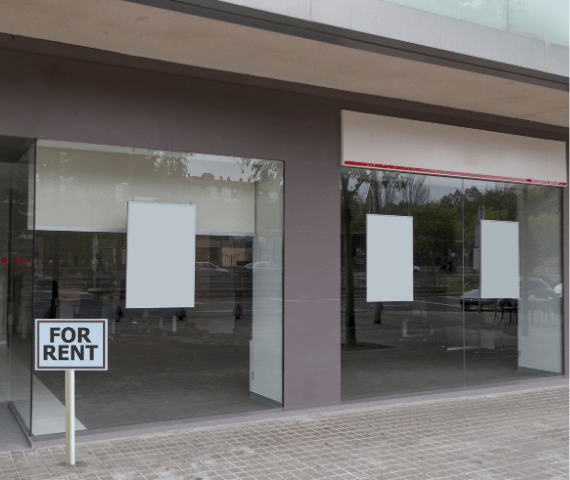The Empty Rates Burden Industry Panel
ASTOP was recently delighted to appear on an industry panel arranged by Completely Retail News. The event brought together industry experts, including our own Shaylesh Patel, to tackle the pressing issue of empty rates and the broader challenges facing landlords and retailers in today’s market.
The session, moderated by Lisa Pilkington, a seasoned BBC journalist, delved into the complexities of the business rates system, the impact of recent policy changes, and potential solutions for mitigating the financial strain on property owners. You can watch the video to the right.
Panellists and Their Perspectives
The panel featured three distinguished speakers, each bringing a unique perspective to the conversation:
Shaylesh Patel is the Principal Director of ASTOP, which advises the charity sector, commercial landlords, and CSR budget holders on property, finance, and other strategic matters.
Bassam Mahfouz is a Labour London Assembly candidate for Ealing and Hillingdon who also serves as Ealing Council’s Cabinet Member for Safe and Genuinely Affordable Homes and runs a refugee charity.
Christina Beggan is Director of Asset Management at Ellandi, a leading UK delivery partner specialising in investing, transforming, and managing retail and town centres.
With host retail industry journalist Lisa Pilkington on hand, the panel explored the ramifications of the recent changes to empty rates relief in England, shared insights into how landlords can adapt, and discussed the broader implications for the retail sector and local communities.
The Empty Rates Burden: A Pressing Concern
The discussion opened with a look at the empty rates burden, which refers to the costs landlords incur when their commercial properties are vacant. This issue has become increasingly problematic as high streets across the UK face significant challenges, exacerbated by changing consumer behaviours, economic pressures, and the aftermath of the COVID-19 pandemic.
Host Lisa Pilkington started the conversation by asking the audience about their dissatisfaction with the current business rate system, and a significant portion of the attendees raised their hands. This highlighted a widespread concern amongst retailers around the challenges local taxation imposes on property owners, particularly those with vacant properties.
Recent Changes in Empty Rates Relief
One of the key topics discussed was the recent policy change in England, which came into effect on April 1st, 2024. The reset period for empty property relief was extended from six to thirteen weeks. This means a property must now be occupied for at least thirteen weeks before it qualifies for the three-month empty property relief. Previously, a mere six weeks of occupancy would suffice. The panellists discussed the implications of this change, noting that it could lead to increased costs for landlords who are already struggling to fill vacant spaces.
Shaylesh Patel noted that this change had been on the horizon for some time, as similar measures had already been implemented in Wales and Scotland. He suggested landlords and retailers with excess space have been forced to reassess their strategies to manage these costs effectively. Patel emphasised the importance of exploring alternative avenues, such as utilising tax breaks to support the charity sector rather than relying on traditional methods of managing vacant properties. This approach, he argued, aligns with the trend towards more ethical and sustainable business practices.
Ethical Use of Tax Breaks: A Viable Solution?
One of the key topics discussed was the recent policy change in England, which came into effect on April 1st, 2024. The reset period for empty property relief was extended from six to thirteen weeks. This means a property must now be occupied for at least thirteen weeks before it qualifies for the three-month empty property relief. Previously, a mere six weeks of occupancy would suffice. The panellists discussed the implications of this change, noting that it could lead to increased costs for landlords who are already struggling to fill vacant spaces.
Shaylesh Patel noted that this change had been on the horizon for some time, as similar measures had already been implemented in Wales and Scotland. He suggested landlords and retailers with excess space have been forced to reassess their strategies to manage these costs effectively. Patel emphasised the importance of exploring alternative avenues, such as utilising tax breaks to support the charity sector rather than relying on traditional methods of managing vacant properties. This approach, he argued, aligns with the trend towards more ethical and sustainable business practices.
The Social Impact of Repurposing Vacant Spaces
The discussion also delved into the broader social implications of how vacant retail spaces are utilised. Drawing on his experience as both a local council member and a charity leader, Bam Mahfouz pointed out the significant benefits of repurposing these spaces for social enterprises or charitable uses. Mahfouz explained that his charity, which supports refugees, had been able to expand its services significantly by accessing such spaces. In the past two years, the charity increased its reach from 1,300 to 2,000 people, thanks to the availability of these empty properties.
Bam argues that this approach not only helps alleviate the burden of empty rates for landlords but also revitalises high streets and supports local communities. He emphasises the importance of councils and local authorities working with property owners to ensure that vacant spaces are returned to productive use rather than being left to deteriorate. He stresses that this strategy could be a win-win, helping stimulate local economies while addressing social needs.
The Importance of Quick Action
One of the more practical insights came from Shaylesh Patel, who underscored the importance of landlords acting quickly to avoid empty rates altogether. He noted that the original intent of the empty rates tax was to incentivise landlords to fill vacant properties more swiftly. Patel shared examples of how landlords, particularly in shopping centres, are increasingly taking a long-term view by working with social enterprises and other non-traditional tenants to repurpose vacant units. These partnerships help avoid empty rates and contribute to the retail sector’s broader social and economic revitalisation.
Christina Beggaan provided further context by discussing specific examples from her work. She explained how they partnered with social enterprises in one shopping centre to create a vibrant community hub. What started as a “meanwhile use” — a temporary solution while the centre was being redeveloped — had evolved into a thriving space that housed 14 social enterprises. This initiative reduced the centre’s vacancy rates and enhanced its appeal to visitors, driving footfall and increasing overall business activity.
The Mismatch Between Rates Relief Policy and Reality
Despite these innovative solutions, the panellists acknowledged the significant challenges that remain. Christina Beggan highlighted a critical issue: the mismatch between the time it takes to re-let a property and the relief period offered under the current system. On average, it takes 12 to 18 months to re-let a retail property, far longer than the 13 weeks of relief now provided. This disconnect means many landlords still face substantial financial burdens, even when they are actively working to re-let their spaces.
Bam Mahfouz added that the broader issue of business rates reform is unlikely to be a top priority for the government, given the many other pressing challenges facing the country. However, he emphasised that certainty and stability in the business rates system are crucial for businesses and landlords alike. Without it, confidence in the market will remain low, hampering efforts to revive struggling high streets and retail centres.
Looking ahead, the panellists expressed cautious optimism that some reforms might be on the horizon, particularly thanks to a change in government. However, they were realistic about any new administration’s challenges. While business rates are unpopular among property owners, they are unlikely to ever be a major vote-winner. This means that significant reforms may not be forthcoming in the near future, and meaningful change will take time.
Conclusion
The panel discussion provided a comprehensive overview of the challenges and potential solutions related to the burden of empty rates. While the current business rates system poses significant challenges for landlords and retailers, the panellists highlighted several innovative approaches to mitigating these issues. However, the discussion also underscored the need for broader systemic change. Many of these challenges will persist without meaningful reform to the business rates system, leaving landlords and retailers to navigate a complex and often frustrating landscape.
However, the panel proved help is available, and the panellists shared plenty of success stories to inspire action. You can contact ASTOP’s Shaylesh Patel directly to learn more.









